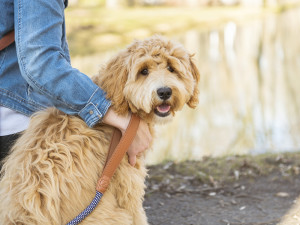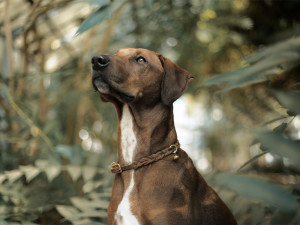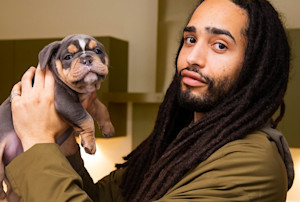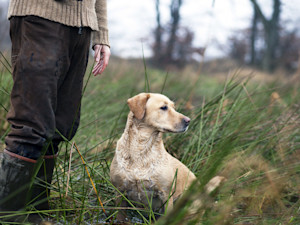One Major Misconception About Cockapoos Just Got Debunked
Think Cockapoos are healthier because they’re crossbreeds? Learn what the latest research says
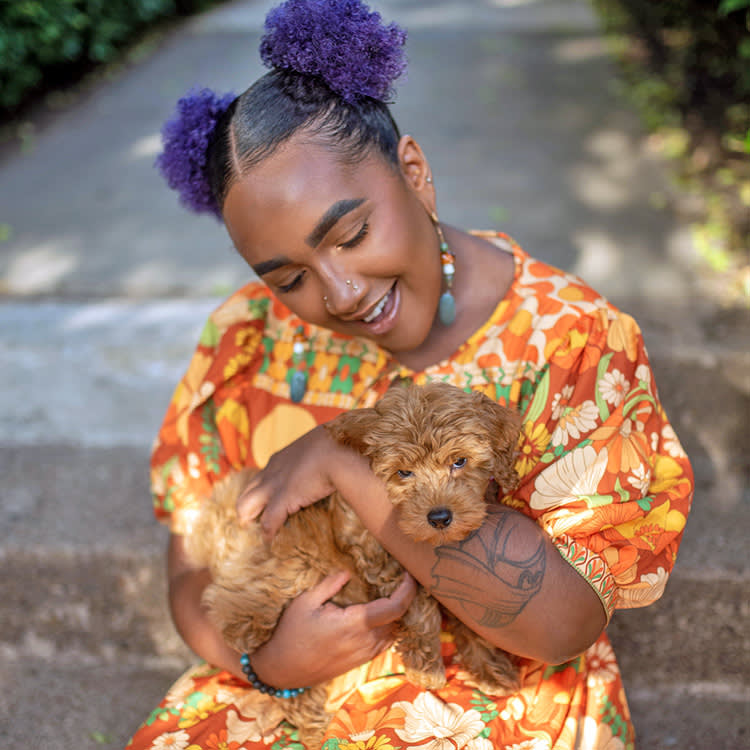
Share Article
You see them everywhere. Your neighbour or mate probably has one. Maybe you’re already a pet parent to one and part of the club – or you’ve had at least a fleeting thought about buying or adopting one. Yep, we’re talking about the ‘poo’ mixes – Cockapoos, Labradoodles and Cavapoos – becoming the go-to ‘designer’ dog.
Granted, part of the reason they’re so popular is because they’re so damn cute, but there’s also a commonly-held belief that because they’re a mixed breed, they are somehow healthier than purebred dogs. It’s ‘advice’ dressed up as a fact that you’ve probably stumbled upon or heard about before. But, a new study by the scientists at the Royal Veterinary Collegeopens in new tab suggests that isn’t the case – in fact, their health is largely the same as their purebred parents.
Whilst scientific studies provide essential data, as pet parents, we want to understand what the study’s results mean IRL. So, to put the stats into chat, we caught up with two of the study’s authors: Gina Bryson, who conducted the research as part of her master’s degree at the Royal Veterinary College, and lecturer in companion animal behaviour and welfare science, Dr Rowena Packer.
Dr Packer has been conducting dog-breed research for the past 15 years, so she’s observed the rise of designer crossbreeding. “Since Covid, there’s been an uptick in the small, fluffy designer dogs – your Cavapoos and Cockapoos,” she says over a Zoom link as a cat walks on the sofa behind her (very on brand). As a scientist, she thought this phenomenon needed to be investigated. “Why are people drawn to them? What are the human drivers?”
The popularity rise of Cockapoos and other designer dog breeds
History lesson incoming: this kind of designer crossbreed originated in Australia. The first poo-cross was originally invented by a man named Wally Conron for the Guide Dog Association as an allegedly low-shedding, hypoallergenic dog. “There’s lots of people with disabilities who also have allergies – they wanted to fill that market,” Dr Packer explains. The Labradoodle – as it would go on to be named – was born. It supposedly had the working ability of the Labrador with the hypoallergenic coat of the Poodle. (Side note: Wally Conron went on to regret his creation, saying he ” opened a Pandora’s boxopens in new tab”.)
But as is the case with guide dogs in training, “many didn’t make the grade, so they needed homes”. And so, as a marketing tool, the ‘poo’ portmanteaus were born. “That was back in the 80s – and it worked.”
Are Cockapoos healthier? The misconception explained
“They were pushed as being healthier, because they were crossed,” explains Dr Packer. “And there’s some biology driving that, there’s a concept of hybrid vigour that applies across all kinds of species, including plants.” Dr Packer explains that when you cross two diverse species, you potentially get a healthier offspring by virtue of them having less of the problematic gene. But Dr Packer says there isn’t actually much evidence to support this in dogs.
Dr Packer puts the rise of the designer breed down to something she calls ‘social contagion’. “Like a virus, dog breeds spread,” she says. “We see one we like when we're out and about, have a chat with the pet parent, that gets into somebody’s head, then it spreads and spreads and spreads…”
But here’s the thing, these dogs are brought into families based on misconceptions – and people aren’t stopping to verify if those misconceptions are true. “People assume that a label gives a guarantee.” Plus, “they look like teddy bears,” says Dr Packer, “but they’re still little carnivores. They’re dogs. You’re not actually adopting a teddy bear who won’t bite you or be sick all over your nice cream carpet.”
For Gina and Dr Packer, the driving force behind this study was the fact that people are often getting these dogs for children. “That’s always a red flag when people are specifically feeling like a breed is off-the-shelf good with kids. They are still dogs,” repeats Dr Packer, to reiterate the point. “They’re so variable, and I’m worried.” Gina and Dr Packer are concerned with people getting them as their first dog, that they won’t put in the time, training and safeguarding that’s always needed regardless of breed.
Enter: the study to put things straight.
The study: crossbreeds vs purebred dogs
OK, the science bit. The study that Gina and Dr Packer worked on is the largest ever into the health of designer crossbreeds, looking at the Cockapoo, the Labradoodle and the Cavapoo. “When we started, the amount of research out there on designer crossbreeds was tiny,” says Gina. “Considering their popularity, there’s hardly any papers that include them…”
So the study enlisted 9,402 UK pet parents, not just of the designer crossbreeds, but also their parent breeds: Cocker Spaniel, Labrador Retriever, King Charles Spaniel and Poodles. Each pet parent passed over information about their dog, which was then compiled to assess the risk of 57 common disorders. And in a huge 86 percent of them, there was absolutely no difference between the breeds.
However, there were some noteworthy differences. The designer crosses are more likely to suffer from vomiting and diarrhoea than the purebred Poodle. “The three designers all have intestinal problems or skin problems,” says Gina. Plus, Gina points out that those cute fluffy curls around their ears make them more likely to get ear infections. “That coat is a challenge and needs looking after and grooming,” she says.
What you need to know before getting a Cockapoo (or other ‘poo’ crossbreed)
Put. In. The. Work. These pooches are high maintenance so get them used to being groomed from the earliest opportunity – especially if you have them from a pup. Touch their ears and their paws. Train them. Teach them how to interact with the human world we’ve brought them into.
If you don’t, you risk your pooch-human relationship breaking down. “If your dog doesn’t like being touched and you touch them somewhere sore, they will be fearful,” explains Dr Packer.
Both Gina and Dr Packer aren’t saying don’t adopt a poo mix, what they are saying is: “go in with your eyes open”. Take a step back, forget they are designer crossbreeds for a moment – “look at your dog as a dog,” asserts Gina. “Apply the same pet parent responsibilities as you would with all dogs: make no assumptions – you’ve got a certain type of dog but that doesn’t mean they’re immune to anything.”
And if you’re thinking about letting a Cockapoo into your life? “Visit a breeder at least once, but I recommended three times,” says Dr Packer. “See that puppy with its mum. Then you need that breeder to convince you that they are in that home for the duration of the time they're reared.” Puppy farmers will try and trick you, using a home as a front.
But right now, because there’s such big numbers, a lot are going into shelters. “People are struggling with them, either at vets or at groomers,” says Dr Packer. One of the biggest reasons for dogs being relinquishedopens in new tab is that they don’t “meet expectations”.
So, like a dog’s coat, shed any expectations – your poo mix might not actually be hypoallergenic (only the Poodle is hypoallergenic, they might inherit more Cocka). Also, there are three varieties of Poodle – standard, miniature and toy – plus some of the breeds they’re mixed with – Cockaspaniels, in particular – might come from working lines, meaning they are hugely energetic.
Dr Packer also points out now that we’re getting to the point where the mixes are mixing, so a Cockapoo and a Labradoodle, for example, there are endless unknowns. “Know that they’re going to have some potential health problems, and they’re not going to be perfect with your kids,” says Dr Packer. Dogs can’t tick boxes, but that makes the journey that much more fun. Just be ready for it…
Resources:

Alice Snape
Alice Snape is a freelance writer and editor whose work has featured in Cosmopolitan, Metro, Red, Vice, amongst other publications. Her rescue dog Lucy is the love of her life – probably because she’s an anxious weirdo like her. You’ll likely find them both curled up in bed – Alice’s favourite place to write from – or out having an adventure together in the park…
Related articles
![Brown dog with white markings standing in leaves]()
Can You Identify Dog Breeds Visually?
The truth is breed labels are often wrong
![a picture of an Alaskan Malamute with its paws up on a cage door]()
These Dogs Wait The Longest In Rescue Centres To Be Adopted
They might be bigger, but that just means there’s more of them to love
![a man with dreadlocks holds up a french bulldog puppy and they both look at the camera]()
BBC Documentary Highlights The Sobering Repercussions Of Covid’s Puppy Boom
”It’s the commodification of animals, it’s social currency – whether it’s to look hard or manly or to emulate a celebrity. We put pressure on that dog to play a role in our lives”
![Gun dog in a field]()
Born This Way: How to Meet The Needs of Your Dog’s Breed
Different breeds need different things...


